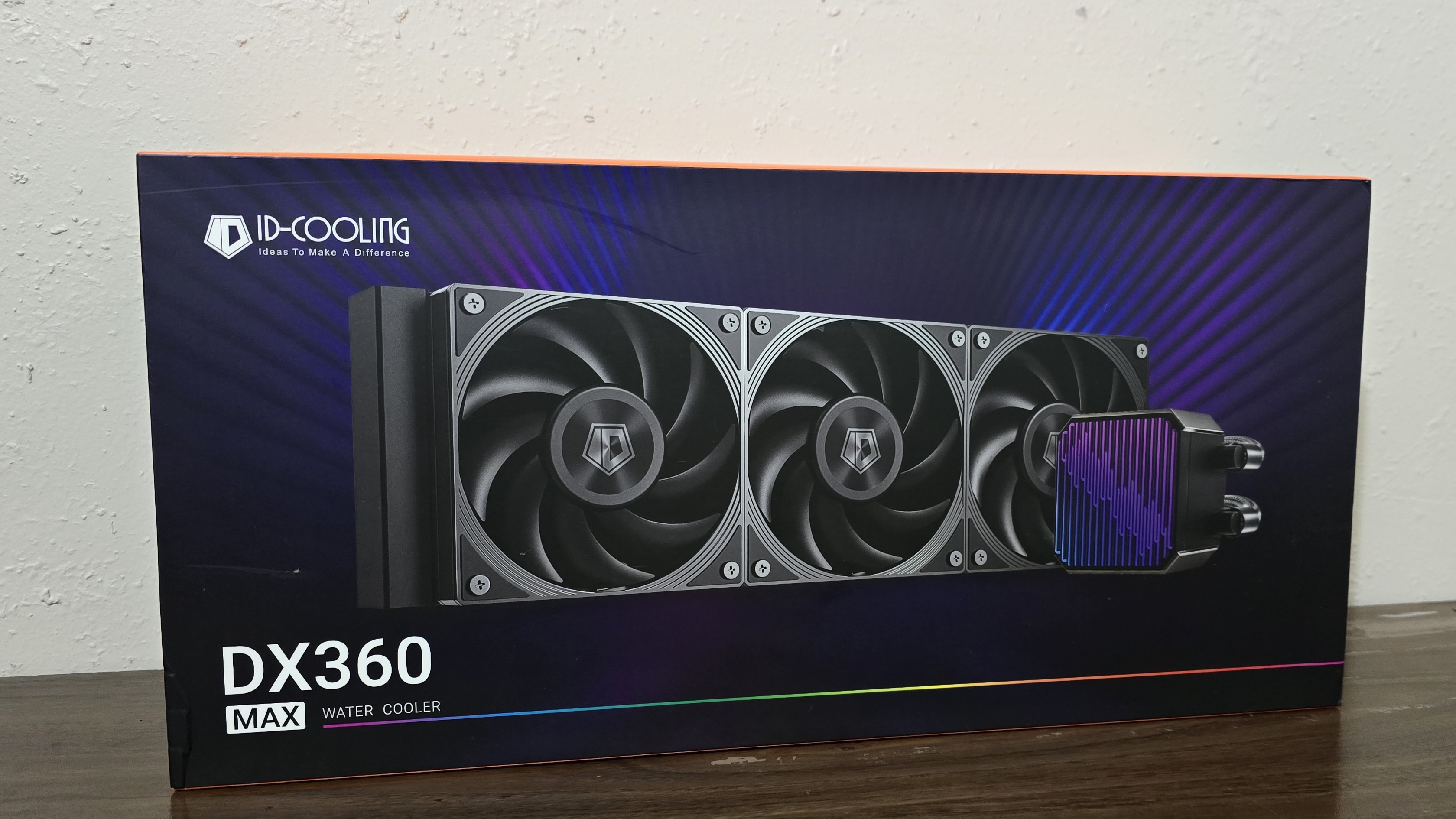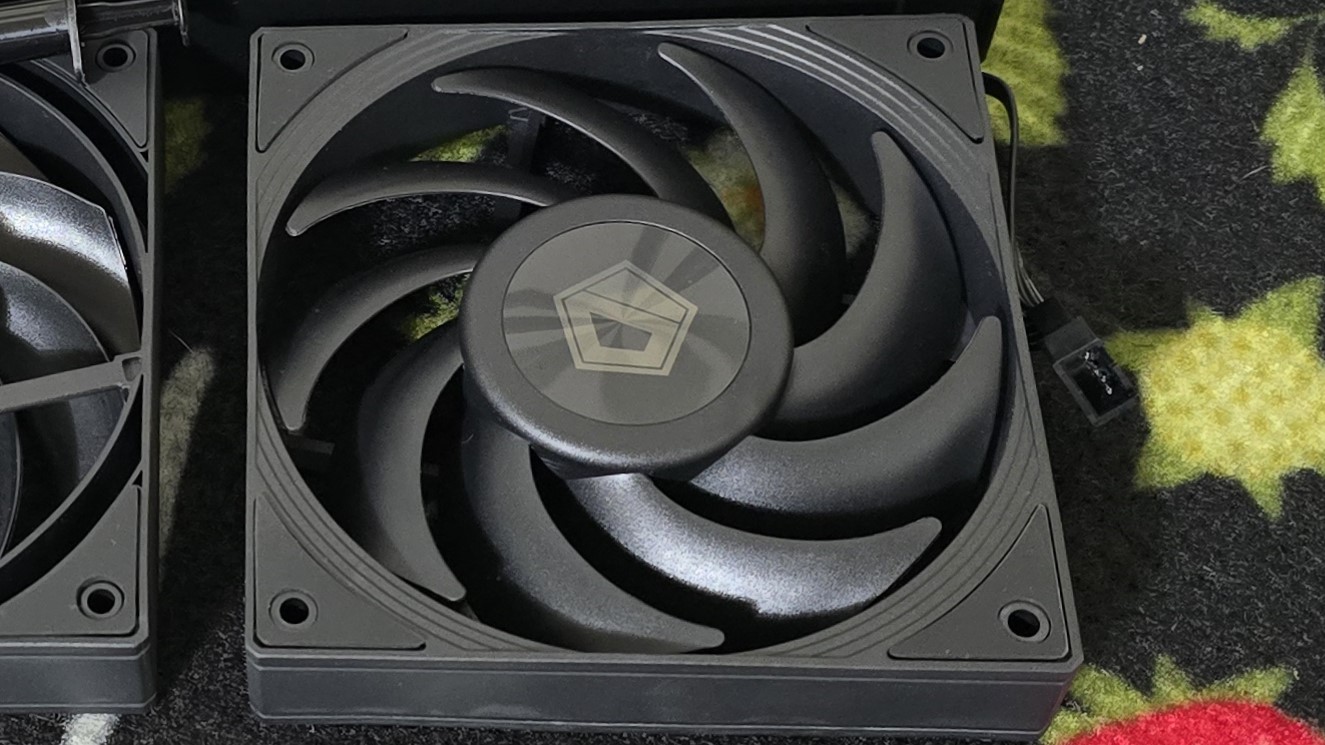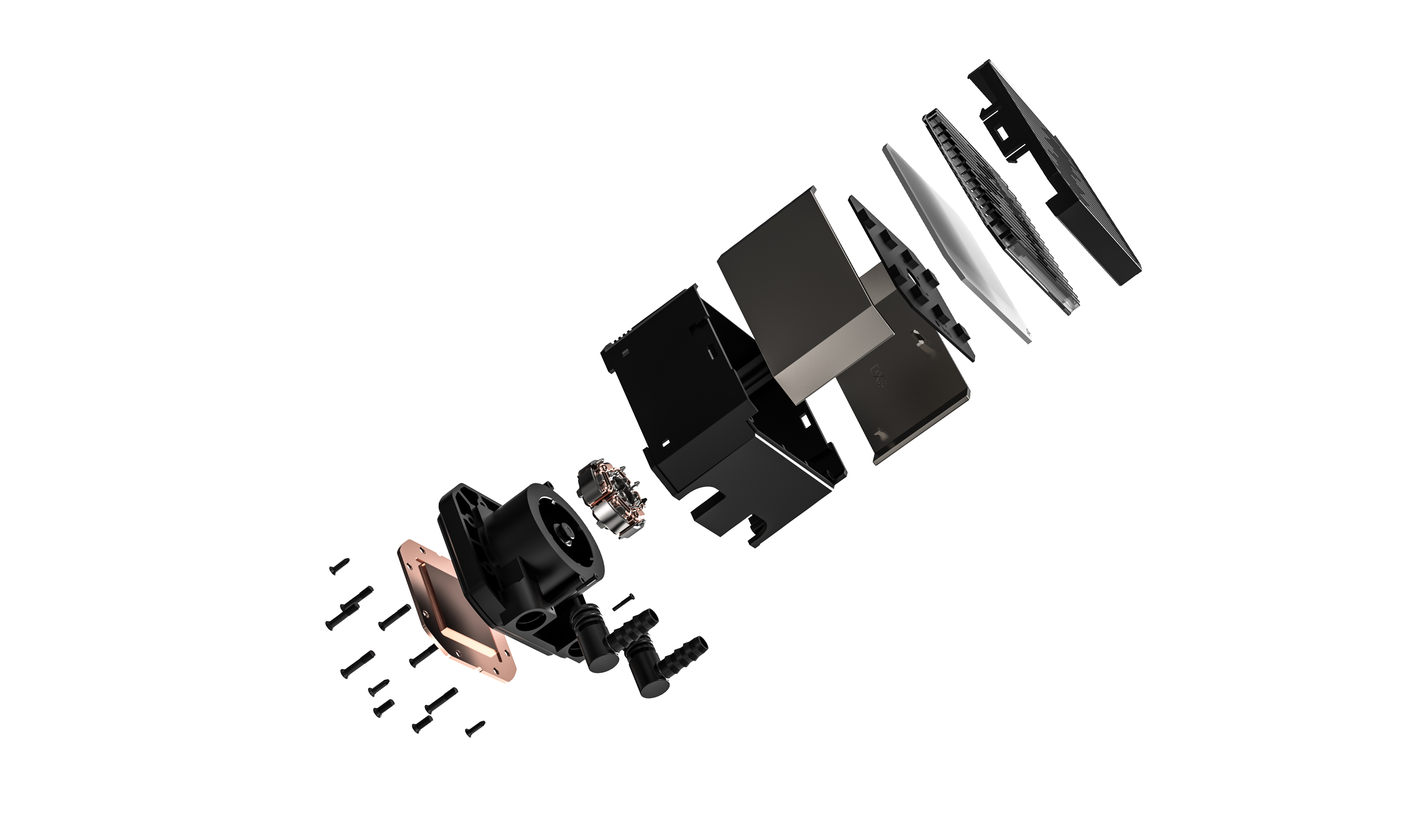Tom's Hardware Verdict
ID-Cooling’s DX360 Max offers good thermal performance, but its fans are a bit noisy if tied to a motherboard’s default fan curves. But the fans also offer zero RPM operation – for complete silence in low-intensity workloads.
Pros
- +
Low price
- +
Strong thermal performance
- +
Zero RPM fan mode available
- +
Thick 38mm-ish radiator
Cons
- -
High noise levels
- -
Noise-normalized performance could be better
Why you can trust Tom's Hardware
Many of ID-Cooling’s recent releases have been rather impressive. Its dual-tower A720 air cooler is one of the best performers on the market. And like competitor Thermalright, ID-Cooling is known for its budget-priced products. The last of the company’s AIOs we tested, the FX360 Pro, is priced at a rock-bottom $60. The company’s latest, AIO the DX360 Max, steps things up in terms of performance, thickness, and price, but it’s still quite affordable for a performance-oriented liquid cooler, at $89.99.
The DX360 features a 38mm thick radiator and is the first ID-Cooling AIO to feature the company’s updated CPU contact plate. Does the DX360 Max have what it takes to make our list of Best CPU coolers? Let’s take a quick look at the unit’s specifications, then we’ll dive into its features and our testing.
Cooler specifications
| Cooler | ID-Cooling DX360 Max |
| MSRP | $89.99 USD |
| Heatsink Material | Aluminum |
| Lighting | CPU Block – ARGB Fans - None |
| Warranty | 5 Years |
| Socket Compatibility | Intel Socket LGA 1851/1700/1200/115x AMD AM5 / AM4 |
| Pump Speed | 2900RPM ±10% |
| Radiator Size | 400 (L) x 120 (W) x 38 (D) |
| Base | Copper |
| Average Maximum TDP (Our Testing) | ~257W with Intel’s i7-14700K |
Packing and included contents
The outside of the box advertises the essential design of the unit, as well as its compatibility certifications.
The contents are protected with thick molded foam, with the individual contents covered by plastic and/or cardboard.
Included with the box are the following:
- Three 120mm fans
- 38mm-thick radiator
- Cable management clips
- Premium Frost X45 Thermal Paste
- Mounting for modern AMD and Intel platforms
Features of ID-Cooling’s DX360 Max
*️⃣ Three 120mm fans with nine fan blades
There’s more to a cooler than just the heatsink or radiator. The bundled fans have a significant impact on cooling and noise levels, as well as how the cooler looks in your case.
Get Tom's Hardware's best news and in-depth reviews, straight to your inbox.
The DX360 Max’s included fans have a few features that set them apart from others on the market. When a fan curve is set, they support 0-RPM operation for total silence. Their design uses a stepped inlet, small stair-like steps which guide the airflow, as shown in the picture below. And mgnetic bearings are used to ensure vibration-free peak performance.
| Dimensions | 120 x 120 x 25mm |
| Fan Speed | Up to 2150 RPM ±10% with 0-RPM operation supported |
| Air Flow | Up to 85 CFM |
| Air Pressure | Up to 2.83 mmH2O |
| Bearing Type | Hydraulic |
| Lighting | None |
*️⃣ Budget price, strong performance
Many of the strongest AIOs feature high price tags. We recently reviewed one that costs $349.99 USD! ID-Cooling aims for more budget-minded users with the DX360 Max, priced at just $89.99 USD.
*️⃣ Large copper contact plate
The DX360 Max is the first AIO on the market to feature the company’s latest design of copper contact plate, which has been optimized for better heat transfer to provide better performance than its last-generation products. It also features the company’s 7th generation in-house designed liquid pump, which operates at 2900RPM.
Many of y’all have indicated that you like to see the designs of hardware in more detail. ID-Cooling sent us a disassembled picture of the CPU block and pump with the media information supplied, and I’ve included it below for reference.
Included with the AIO is a tube of ID-Cooling’s premium Frost X45 thermal paste, rated at 15.2W/M-K. This is one of the best thermal pastes on the market.
*️⃣ Tubing cable management clips
Three clips are included to guide cable tubing to help optimize airflow and the interior of the case organized.
*️⃣ Rotatable tubing
The ports connecting to the liquid pumps can be fully rotated.
*️⃣ Full RAM Compatibility
As with most other AIO coolers, the DX360 Max does not interfere with or overhang RAM DIMMs – meaning that all sizes of DIMMs, no matter how tall, can be used without compatibility concerns due to the height of your RAM sticks.
*️⃣ Thick 38mm* radiator
The DX360 Max features a radiator that’s thicker than normal; ID-Cooling advertises it as 38mm. But… that measurement isn’t quite comparable to the measurements you’ll see for other AIOs. Most radiators have consistent thickness from one end to the other, whereas the DX360 Max is only 38mm at the ends of the unit. We’ll have to see in testing how this translates to real-world performance.
*️⃣ Illuminated AIO block
The top of the CPU block has an illuminated cover with an interesting artistic design, giving it a nice aesthetic accent.
Testing Methodology, and how my testing differs vs the competition
I do a few things to ensure my results are useful to people who buy and use these coolers in typical setups. To begin, I very strictly regulate the ambient temperature to 23 degrees C during testing. I do not accept results at 22 or 24C as valid, even though in theory there shouldn’t be much of a difference.
I also do my best to emulate the conditions a user would encounter using the cooler, with thermal loads similar to real-life workloads, and tested in a real case – not on an open bench, which can decrease the difficulty of cooling.
Many other reviewers, and in fact many of my own older reviews, test coolers with just a load running on the CPU. While this does provide good and useful information, it doesn’t paint a complete picture of how a cooler will perform. Many workloads, especially gaming, will stress both the CPU and GPU. As such, to test how well a CPU’s cooler will perform in these situations I’ve added two tests – one with a light CPU and one with a moderate CPU load, both while running a full load on with AMD’s Radeon RX 7900GRE.
Testing configuration – Intel LGA1700 platform
| CPU | Intel Core i7-14700K |
| Motherboard | MSI Z790 Project Zero |
| Case | MSI Pano 100L PZ Black |
| System Fans | Iceberg Thermal IceGale Silent |
| PSU | Silverstone HELA 1300 |
There are many factors other than the CPU cooler that can influence your cooling performance, including the case you use and the fans installed in it. A system's motherboard can also influence cooling, especially if its socket suffers from bending, resulting in poor cooler contact with the CPU.
In order to prevent bending from impacting our cooling results, we’ve installed Thermalright’s LGA 1700 contact frame into our testing rig. If your motherboard is affected by bending, your thermal results will be worse than those shown below. Not all motherboards are affected equally by this issue. I tested Raptor Lake CPUs in two motherboards. And while one of them showed significant thermal improvements after installing Thermalright’s LGA1700 contact frame, the other motherboard showed no difference in temperatures whatsoever! Check out our review of the contact frame for more information.
LGA 1700 Installation
- I would start by securing the radiator and fans to your computer case, but this step can be done at the end if you prefer.
- Place the CPU bracket against the rear of the motherboard. Secure it using the included standoffs.
- Set the mounting bars on top of the standoffs, and secure them with the included thumbscrews.
- Apply the included Frost X45 thermal paste to your CPU. If you have any questions on how to do this properly, please refer to our handy guide on how to apply thermal paste
- Place the CPU block against the standoffs, and secure it with a screwdriver.
- Connect the PWM and ARGB cables to the corresponding headers on your motherboard, and installation is complete.

Albert Thomas is a contributor for Tom’s Hardware, primarily covering CPU cooling reviews.














